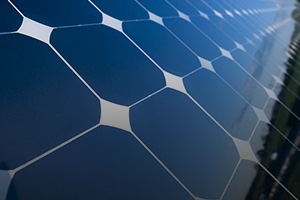Semitransparent Solar Cells

A new type of organic solar cell (OSC) could make solar-powered greenhouses the wave of the future. The key lies in the fact that they are semitransparent, allowing enough light to penetrate to sustain healthy plant growth. In addition, they can be “tuned” to absorb different wavelengths so that whatever the plants require for pollination, photosynthesis, and crop production is made available while the rest is used to generate power.
The technology was tested on lettuce – exposing one group to full-spectrum light and three others to filtered light in which the ratio of blue to red light was varied, while all other variables remained the same. No significant difference was found among the groups in any of the key measurements including size, weight, antioxidant levels, and CO2 absorption. The next step will be to run similar tests on other plants such as tomatoes.
The semitransparent organic solar cells (ST-OSCs) could enable more widespread use of greenhouse farming by providing a more cost-effective way to control internal temperatures. The technology could also be adapted to create energy-generating windows for homes, retail centers, airports, and office buildings.
For information: Heike Sederoff, North Carolina State University, Plant and Microbial Biology, Campus Box 7612, Raleigh, NC 27695; phone: 919-515-2727; email: hwsedero@ncsu.edu; Web site: NC State University (ncsu.edu) or Plant and Microbial Biology | NC State University (ncsu.edu)